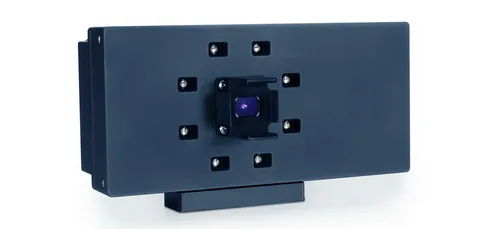As businesses push for smarter, faster, and more adaptive automation, Time-of-Flight cameras are becoming a foundational piece of next-generation technology. Unlike traditional imaging systems, ToF cameras provide real-time, high-precision depth information—helping robots, smart machines, and industrial systems “see” the world in 3D. This enhanced depth perception enables faster decisions, better spatial awareness, and dramatically improved accuracy across a variety of sectors.
From warehouse logistics to autonomous robotics and smart inspection systems, the role of ToF imaging is expanding quickly. And for those seeking industrial-grade solutions, the M-Series Time-of-Flight Camera from MRDVS delivers performance, speed, and integration flexibility needed for advanced automation environments.
In this article, we’ll break down how Time-of-Flight cameras work, what sets them apart, where they are used, and why they’re key to future-proofing modern operations.
What Is a Time-of-Flight Camera?
A Time-of-Flight (ToF) camera is a 3D imaging device that measures the distance between the sensor and an object by calculating how long it takes for a light signal to travel to the object and reflect back. This time delay is converted into accurate depth data, producing a real-time 3D map of the environment.
Unlike stereo vision systems that rely on two lenses or structured light systems that use pattern projection, ToF cameras require only one lens and active illumination. This makes them compact, efficient, and particularly suited for real-time applications where depth data is critical.
Use cases range from:
- Robotic navigation and object avoidance
- Dimensioning and packaging in logistics
- Quality control in manufacturing
- Gesture recognition in consumer electronics
- Patient monitoring in healthcare
How Does a Time-of-Flight Camera Work?
ToF cameras operate by emitting modulated infrared (IR) light onto a scene. That light hits surfaces and returns to the camera’s sensor. The system then calculates the phase shift or travel time between emission and reception. This determines the exact distance to each point in the scene.
Here’s the step-by-step process:
- Light Emission: Infrared light is projected by LEDs or lasers.
- Reflection: The light bounces off objects at different distances.
- Detection: The sensor captures returning light and measures the delay.
- Depth Mapping: Depth is calculated for each pixel and combined into a 3D point cloud or depth map.
This cycle happens in milliseconds—making Time-of-Flight cameras ideal for moving environments where split-second decisions matter.
Benefits of Using Time-of-Flight Cameras
- Real-Time 3D Depth Perception
ToF cameras process entire scenes in real-time, which is essential for dynamic environments like robotic arms, drones, or conveyor belts. - High Accuracy and Resolution
Modern ToF systems provide millimeter-level depth precision, even when dealing with irregular surfaces or low-light conditions. - Compact Design
Compared to multi-camera systems, ToF devices are simpler and smaller, which makes integration into existing hardware easier. - Reliable Under Various Lighting Conditions
Because they use active IR light, ToF cameras work well in both dark and brightly lit environments. - Cost-Effective at Scale
As technology advances, ToF sensors are becoming more affordable, enabling large-scale industrial and commercial deployment.
Key Industrial Applications for Time-of-Flight Cameras
Robotics and Automation
In industrial settings, robots use ToF cameras to sense depth and navigate around obstacles or human workers. These cameras allow for autonomous movement, path planning, and object interaction.
Logistics and Warehousing
ToF cameras are used for box dimensioning, pallet scanning, and item sorting. In fulfillment centers, they power automated pick-and-place systems that adapt to changing inventory layouts.
Manufacturing and Quality Inspection
ToF sensors can detect defects, measure product dimensions, and verify alignment on production lines. They allow non-contact measurement, which speeds up the QA process.
Healthcare and Biometric Systems
In the medical world, ToF imaging assists with 3D body scanning, contactless patient monitoring, and gesture-controlled user interfaces—particularly useful in sterile environments.
AR/VR and Consumer Electronics
ToF cameras are increasingly used in smartphones and VR headsets for gesture recognition, spatial mapping, and depth-enhanced photography.
Comparing Time-of-Flight with Other 3D Imaging Technologies
| Feature | Time-of-Flight (ToF) | Stereo Vision | Structured Light |
| Depth Accuracy | High | Medium | High |
| Real-Time Performance | Excellent | Moderate | Poor |
| Lighting Condition Sensitivity | Low | High | High |
| Hardware Complexity | Low | Medium | High |
| Suitability for Movement | Excellent | Fair | Poor |
ToF technology offers the best balance between speed, precision, and versatility, making it ideal for industrial and robotics applications.
Choosing the Right Time-of-Flight Camera
When selecting a ToF camera, you need to consider several performance variables:
- Depth Range: Make sure the sensor supports the working distance your application requires.
- Frame Rate (FPS): Higher frame rates are better for fast-moving objects or machinery.
- Resolution: A higher resolution offers more detailed depth maps but may require more processing power.
- Field of View (FoV): Wide FoVs capture more area but may reduce resolution at the edges.
- Integration Support: Choose a system with strong SDK, API, or driver compatibility.
If you’re working with robotic systems or need consistent measurements in dynamic environments, prioritize latency, accuracy, and environmental resistance.
M-Series Time-of-Flight Camera: Industrial Grade Innovation
The M-Series Time-of-Flight Camera from MRDVS stands out for its industrial-grade durability, fast response times, and high-resolution performance. Built specifically for automation, logistics, and 3D vision, the M-Series features:
- Real-time depth processing with low latency
- High frame rates for moving objects
- Plug-and-play SDKs for easy integration
- Robust operation in low-light or reflective conditions
This camera is ideal for high-demand operations where precision and reliability are critical.
Limitations and Considerations
Despite its advantages, there are a few considerations when working with ToF cameras:
- Reflective or transparent surfaces may interfere with IR light and affect depth accuracy.
- Multiple ToF sensors in the same space can create signal interference unless synchronized properly.
- Ambient IR sources, like sunlight, can sometimes reduce depth fidelity if not accounted for.
Most of these challenges can be mitigated with filters, shielding, and advanced firmware.
The Future of Time-of-Flight Technology
As computing power increases and sensor miniaturization continues, ToF cameras will become even more powerful. Expect future improvements like:
- Edge-AI Depth Processing for on-device decision-making
- Sensor Fusion combining ToF with LiDAR, RGB, and IMU data
- Ultra-compact embedded systems for wearables and mobile devices
- Cloud-integrated 3D Vision Analytics for smarter reporting and feedback loops
With these advancements, ToF will not only improve performance but also become a key part of real-time, intelligent machine ecosystems.
Conclusion
A Time-of-Flight camera isn’t just a sensor—it’s a gateway to smarter, more responsive automation. Whether you’re developing robotic arms, automating a warehouse, or creating intelligent inspection tools, ToF technology provides the fast, accurate, and reliable depth data you need to stay competitive.
The industrial-grade M-Series Time-of-Flight Camera by MRDVS is a standout solution that brings all the benefits of ToF imaging into a robust and easy-to-integrate platform. For any business looking to innovate with real-time 3D vision, this is the technology to watch—and implement.


